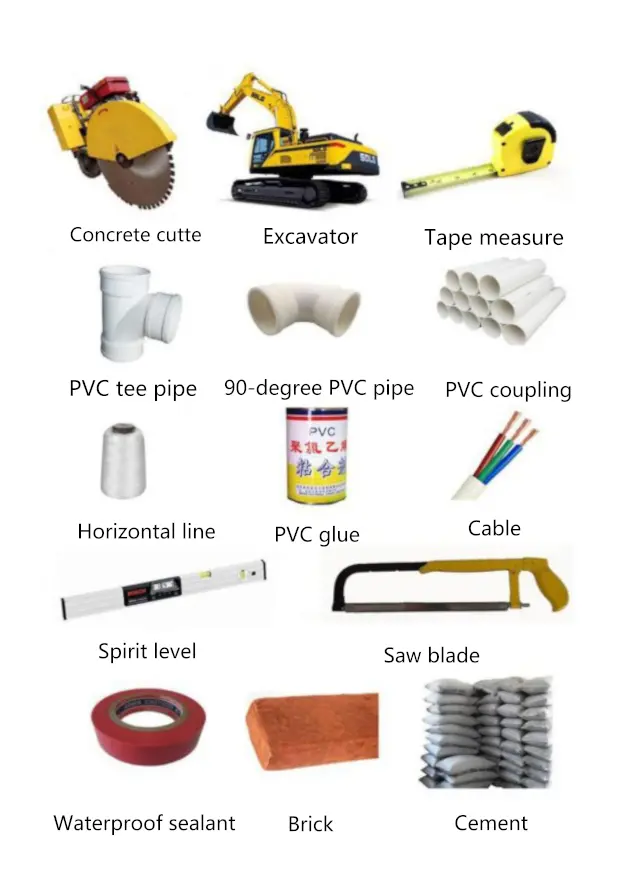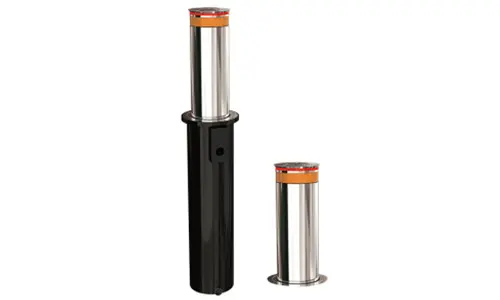Preparation Tools and Precautions Before Installing Automatic Bollards
automatic bollards
(also known asrising bollards
orretractable bollards
) have become a reliable solution for vehicle management. In environments where stringent security and access control are essential, bollards effectively prevent unauthorized vehicles from entering restricted areas, providing efficient entry management for a variety of locations.This article offers a comprehensive preparation guide for installing bollards, including a brief overview of their purpose, an analysis of common application scenarios, a breakdown of key features, and a list of necessary tools and precautions for installation.
Main Purpose of Bollards
The primary function of bollards is to restrict unauthorized vehicles from entering specific areas, especially in locations requiring high-security protection. In cases of forced entry attempts, bollards provide a solid physical barrier, effectively blocking vehicles with their sturdy structure. As a result, bollards have become a flexible and reliable vehicle access management solution for various high-security settings.
Application Scenario Analysis
Before using the automatic bollards, please consider the following applications:
Government Facilities and Military Bases
: In high-security areas, bollards allow for remote control via a mobile app or remote device, effectively blocking unauthorized vehicles from entering and ensuring area security.Pedestrian Zones and City Centers
: In pedestrian zones within urban areas, bollards can designate pedestrian-only areas. During the day, the bollards remain raised to prevent vehicle access, ensuring pedestrian safety. In emergencies (such as fires or medical situations), bollards can be quickly lowered to allow emergency vehicles through.Multi-Purpose Plazas
: Bollards are ideal for multi-functional plazas. During the day, they can remain raised to create pedestrian zones; at night, they can be lowered to allow vehicles access for parking, maximizing the utility of the space.Open Parks and Green Spaces
: Bollards are often used at entrances to parks and green spaces to manage vehicle access and ensure pedestrian safety. In cases of emergency maintenance or special vehicle access needs, bollards can be lowered, providing a balance of security and flexibility.Residential Areas, Banks, and Schools
: In residential complexes, banks, schools, and other areas requiring regulated access, bollards help control entry and maintain order. They also ensure that fire lanes remain clear, making them particularly suitable for places that demand strict vehicle management.
Key Features of Bollards
High-Strength Protection
: The bollard structure is robust, effectively blocking vehicles in forced entry attempts.Remote Control
: Supports mobile or remote operation, enabling quick and convenient access control.Modular Design
: Incorporates modular components, allowing for individual part replacement when needed, minimizing maintenance costs.High Visibility
: Equipped with 3M reflective tape and LED warning lights, the bollards remain clearly visible even in low light, enhancing safety.
Tool Preparation and Precautions Before Installation
Tool Preparation
: Necessary tools include a cement cutter, excavator, gravel, PVC pipes, waterproof electrical tape, and various cables and connectors to ensure stable connections between the bollards, power source, and control system. Having all materials ready in advance helps prevent interruptions and delays.Site Inspection
: Ensure that the installation area is free from underground cables, water pipes, or fiber optic lines. In low-lying areas, consider adding drainage to protect the equipment from water damage and prolong its lifespan.Waterproofing Electrical Connections
: Since bollards are typically installed outdoors, waterproofing all electrical connections is essential. Use high-quality waterproof tape to seal connections, preventing moisture from damaging the circuits.Foundation Preparation
: Lay a sand and gravel mixture at the bottom of the foundation pit to create a stable base, preventing the bollard from sinking. For locations prone to water accumulation, installing a drainage system is recommended to improve equipment stability.Safety Check
: Before finalizing the installation, double-check all wiring and positions to ensure that all components are secure and meet installation standards, minimizing the need for frequent maintenance after installation.

Coming Soon: Step-by-Step Guide to Installing Automatic Bollards
With these preparation steps complete, the installation process will proceed more smoothly. In our next article, we’ll provide a detailed guide on the bollard installation process, including equipment placement, securing, and testing, to ensure the bollards are safely and stably installed.












